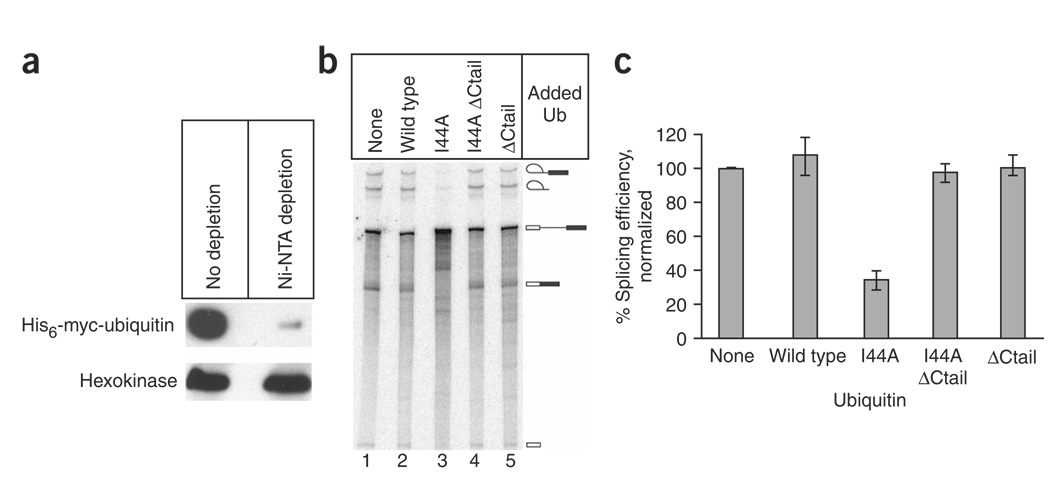Figure 1.
A mutant form of ubiquitin (Ub) inhibits pre-mRNA splicing activity in vitro. (a) Splicing extract from a Saccharomyces cerevisiae strain expressing His6-myc–tagged ubiquitin was depleted of ubiquitin by Ni2+ affinity chromatography. Ubiquitin levels before and after depletion were assayed by probing a western blot with anti-myc antibodies. Hexokinase (below) was used as a control. (b) Ubiquitin-depleted splicing extract was used in 30-min in vitro splicing assays following the addition of wild-type and mutant forms of ubiquitin, as specified above each lane. Each ‘ΔCtail’ mutant had a four-amino-acid truncation at its C terminus to prevent entry into the target conjugation pathway. The mobilities of pre-mRNA, splicing intermediates and splicing products are indicated on the right. (c) Data from b and two equivalent splicing experiments were quantitatively analyzed with a PhosphorImager, and splicing efficiency (defined as (spliced products + splicing intermediates)/total radiolabeled RNA, normalized to the nonsupplemented extract) was plotted. The identities of the added ubiquitin derivatives are given at the bottom. Error bars indicate the range of the three experiments.

